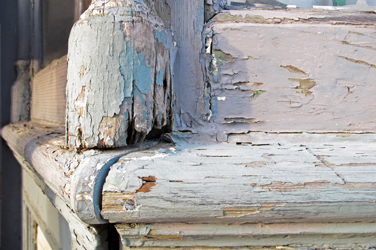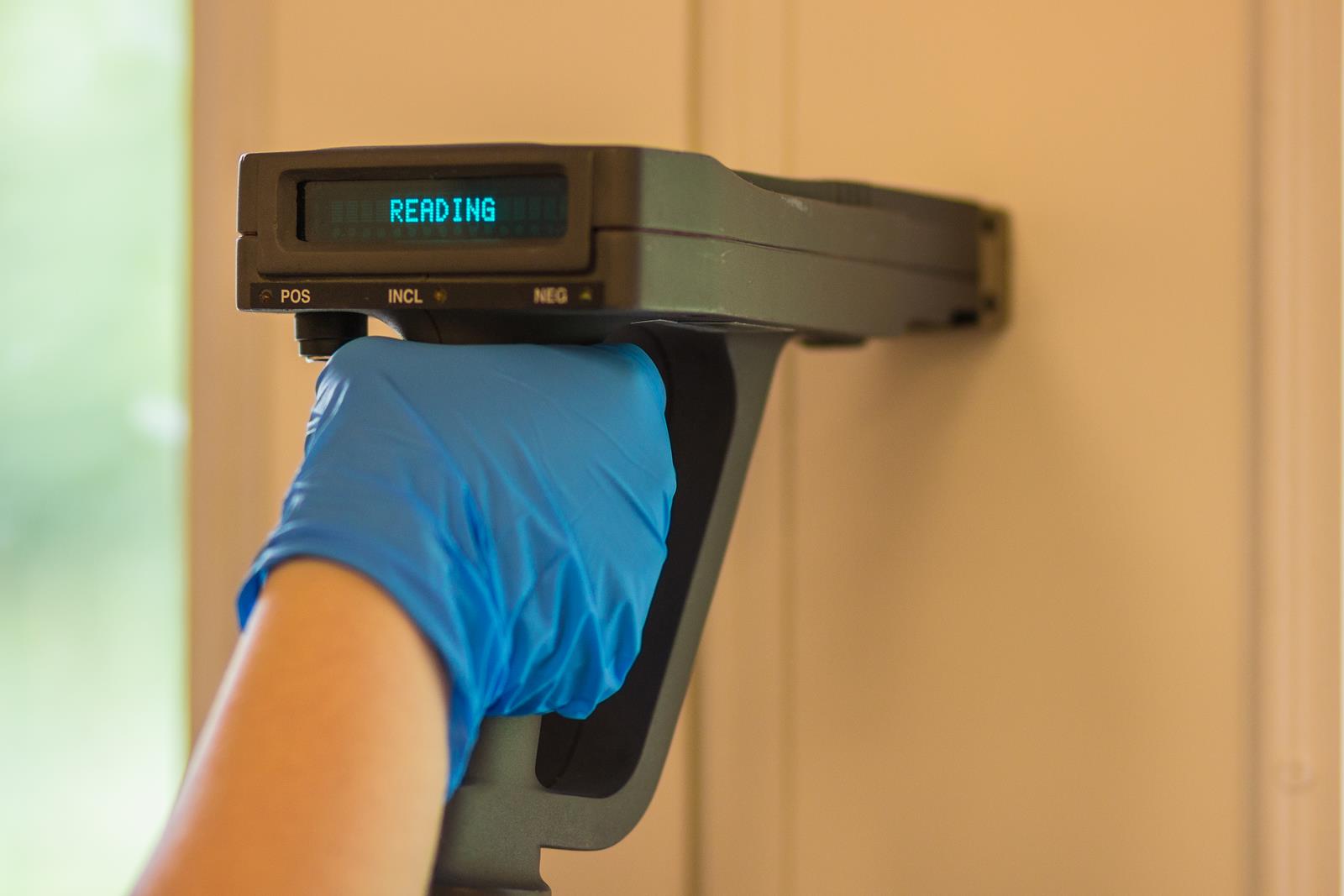This week is National Lead Poisoning Prevention Week. This event is coordinated by the US Environmental Protection Agency to help raise awareness regarding the dangers of lead-based paint. The theme for 2015 is “Lead-Free Kids for a Healthy Future”, something that should strike home with everyone. As a family-owned and orientated business, we at Karl Environmental Group have taken this opportunity to shed some light upon this topic. In this post we talk about the history and hazards of lead paint and provide some helpful tips to reduce your family’s exposure to this harmful substance.
A Brief History of Lead Paint
 Lead was historically added to paint as a pigment and to increase durability; some historians estimate that lead white was being produced as early as the 4th century BC. The product was used throughout the world and was repeatedly endorsed by the US government for use in its buildings. The lead pigment that provided color and texture for oil paints made up as much as 70 percent of a can of paint in the early-to-mid 20th century.
Lead was historically added to paint as a pigment and to increase durability; some historians estimate that lead white was being produced as early as the 4th century BC. The product was used throughout the world and was repeatedly endorsed by the US government for use in its buildings. The lead pigment that provided color and texture for oil paints made up as much as 70 percent of a can of paint in the early-to-mid 20th century.
However, the dangers of lead paint were well known by the beginning of the 20th century. In 1904, Sherwin-Williams internally reported on the dangers of paint containing lead, noting that a leading expert had declared lead paint to be “poisonous in a large degree”. Modern research has proven that lead can cause significant health effects in children, including nerve damage, stunted growth, kidney damage, decreased intelligence, learning disabilities, and behavioral problems. Adults are also at risk from exposure to lead. Health effects in adults include high blood pressure, fertility problems, nerve disorders, miscarriages, and sexual disorders.
The Lead Paint Ban
Since the 1920s, the lead industry fought proposed bans, restrictions, and warnings of paint can labels. Industry representatives even threatened lawsuits against CBS after it aired television shows depicting the product as dangerous. In the 1950s, after years of lobbying and propaganda by the lead paint industry, a movement for change was slowly motioned by individual local health departments, who began forbidding the use of lead paint in toys and furniture. In 1978, the US government banned the use of lead-based paint for sale to consumers. But the ban did not include all lead paint; certain exemptions were made for artist’s materials, touch-up coatings, and agricultural and industrial coatings.
Lead Paint Hazards
The 1978 ban means that if your home was built before 1978, there is a good chance that it has lead-based paint lurking somewhere. To this day, millions of homes throughout the US still have lead paint, sometimes under several layers of newer paint. It is estimated that up to 87 percent of homes built before 1940 contain the stuff. But lead paint is not only in homes, due to its widespread use it may also be found in childcare facilities, apartment buildings, schools, and public buildings.
There are several ways that the lead from paint can get into the body. It may be breathed in as dust (especially during renovation work), swallowed as dust that has settled on food and food preparation surfaces, or may be eaten as paint chips or in soil that is contaminated with lead. Although lead impacts both adults and children, lead is particularly dangerous to children under the age of 6. At this age, children’s brains and nervous systems are rapidly developing and are more sensitive to the damaging effects of lead. Lead is also particularly dangerous to pregnant women, often resulting in irreversible side effects to the development of the unborn child.
According to the EPA, if lead-based paint is in good condition (i.e. not peeling, chipping, chalking, cracking, or otherwise damaged), it is usually not a problem. However, if lead paint surfaces are damaged or found on surfaces that children can chew or get a lot of wear-and-tear, the lead may present a lead hazard. Surfaces that may produce lead dust and chips through wear-and-tear are known as friction and impact surfaces, these include doors and door frames, windows and window sills, stairs, railings, banisters, and porches. The EPA recommends that these surfaces should be maintained in excellent condition to reduce any potential hazards.
Deteriorating or damaged lead paint is a hazard and requires immediate attention!

Lead dust can also form when lead-based paint is disturbed during renovation or repair activities that include sanding, scraping, or heating. Lead dust created by these activities often fills the air, spreading across the workspace and into other areas of the home. Large quantities of lead dust may be generated by only a small amount of work. Settled dust may reenter the air when the area is vacuumed or disturbed by movement, making it virtually impossible to remove completely.
Lead contaminated soil may be created by number of processed. Typically, soils may be impacted by lead dust or paint chips from nearby deteriorated paint surfaces or during renovation activities that haven’t been performed with adequate protection. Soils may also be impacted around the drip line of a property by the runoff of water over lead paint surfaces.
Protect Your Family
Now that we have covered the history behind lead paint and its associated health hazards, it is important to know what you can do to protect your home and loved ones. The following are simple steps that you can take to be sure you are safe:

-
Have Your Home Tested for Lead Paint
 If your house was built before 1978, there is a good chance that it contains lead paint. A lead-based paint inspection by a certified Lead Inspector will let you know exactly what surfaces contain lead. The inspector will test individual painted surfaces throughout the home, often using an XRF analyzer that will not damage the paint. A risk assessment can also be performed by a certified Lead Risk Assessor, letting you know if your home has any lead hazards and if so, what action can be taken to address them. The assessor will test deteriorated paint and paint on friction and impact surfaces, as well as collecting dust wipe samples throughout the home. Soil samples can also be collected to determine whether soil contamination has occurred. You should always consider having a lead inspection performed prior to purchasing a new home!
If your house was built before 1978, there is a good chance that it contains lead paint. A lead-based paint inspection by a certified Lead Inspector will let you know exactly what surfaces contain lead. The inspector will test individual painted surfaces throughout the home, often using an XRF analyzer that will not damage the paint. A risk assessment can also be performed by a certified Lead Risk Assessor, letting you know if your home has any lead hazards and if so, what action can be taken to address them. The assessor will test deteriorated paint and paint on friction and impact surfaces, as well as collecting dust wipe samples throughout the home. Soil samples can also be collected to determine whether soil contamination has occurred. You should always consider having a lead inspection performed prior to purchasing a new home!
-
Checking Your Children
 Children’s blood lead levels are a direct indication of whether they have been exposed to lead. According to the EPA, blood lead levels tend to increase rapidly from 6 to 12 months of age, peaking at 18 to 24 months. If you believe your children may have been exposed to lead, immediately consult your family doctor for advice about having their blood levels checked.
Children’s blood lead levels are a direct indication of whether they have been exposed to lead. According to the EPA, blood lead levels tend to increase rapidly from 6 to 12 months of age, peaking at 18 to 24 months. If you believe your children may have been exposed to lead, immediately consult your family doctor for advice about having their blood levels checked.
-
Children’s Toys
 Old toys may contain lead paint. Avoid giving old toys to younger children who are more likely to chew and bite them. Even varnish and shellac finishes on older wooden toys may contain harmful levels of lead. When buying new toys, always buy from reputable retailers and manufacturers. Many countries are not subject to the same manufacturing standards and more frequently we hear stories about lead paint being found on imported toys. Always complete manufacturer warranty cards for recall notices and subscribe to the CPSC website to receive notifications about other recalls.
Old toys may contain lead paint. Avoid giving old toys to younger children who are more likely to chew and bite them. Even varnish and shellac finishes on older wooden toys may contain harmful levels of lead. When buying new toys, always buy from reputable retailers and manufacturers. Many countries are not subject to the same manufacturing standards and more frequently we hear stories about lead paint being found on imported toys. Always complete manufacturer warranty cards for recall notices and subscribe to the CPSC website to receive notifications about other recalls.
-
Hire Qualified Contractors
In 2010, the EPA enacted the Lead Renovation, Repair, and Painting (RRP) Rule. The Federal law aims to protect the public from lead-based paint hazards generated by renovation work. The rule requires that firms and individuals working in homes and child-occupied facilities built prior to 1978, be certified in lead-safe work practices. The rule states that work areas must be properly contained and prohibits certain practices such as open-flam burning, use of certain dust-creating power tools, and restriction of heat guns above 1100°F. The EPA maintains a website listing certified lead-safe firms. Be sure to always hire a lead-safe certified firm to do any work in your home that may disturb lead paint.
-
DIY Projects
Before undertaking renovation, repair, or painting projects in your home, make sure you know how to perform the work properly and protect yourself from exposure to dangerous levels of lead. Protective measures include proper clothing protection, respirators or dust masks, plastic sheeting to contain dust, misting and wetting materials, wrapping waste, and effective cleanup. Consult the EPA’s Renovate Right Pamphlet for detailed information on what steps to take when working in your own home.
-
Maintaining and Cleaning Your Home
 Maintain painted surfaces in your home, particularly those subject to friction and impact (doors and door frames, windows, stairs etc). Keeping painted surfaces in good conditions will help reduce deterioration and minimize the creation of harmful lead dust. Regular cleaning of your home can also be a very effective way to reduce lead dust hazards. Use wet mopping systems (such as Swiffer) and wet wipes to capture dust on hard floors, countertops, and other hard surfaces. Upholstery and carpeted floors should be vacuumed regularly using a vacuum cleaner equipped with a HEPA filter. Keep children’s play areas clean and wash pacifiers, toys, and stuffed animals regularly.
Maintain painted surfaces in your home, particularly those subject to friction and impact (doors and door frames, windows, stairs etc). Keeping painted surfaces in good conditions will help reduce deterioration and minimize the creation of harmful lead dust. Regular cleaning of your home can also be a very effective way to reduce lead dust hazards. Use wet mopping systems (such as Swiffer) and wet wipes to capture dust on hard floors, countertops, and other hard surfaces. Upholstery and carpeted floors should be vacuumed regularly using a vacuum cleaner equipped with a HEPA filter. Keep children’s play areas clean and wash pacifiers, toys, and stuffed animals regularly.
-
Drinking Water
 Older homes may also have plumbing systems that contain lead or lead solder. Unlike bacterial contamination, simply boiling the water will not have any impact upon the lead. If you suspect your plumbing system may contain lead, you should consider having it tested by your local health department, an environmental consultant, or an environmental laboratory. In the meantime, you may reduce your exposure to lead in drinking water by using only cold water for drinking and cooking (hot water lines tend to dissolve more lead out of the system) and running water for 30 seconds before drinking it.
Older homes may also have plumbing systems that contain lead or lead solder. Unlike bacterial contamination, simply boiling the water will not have any impact upon the lead. If you suspect your plumbing system may contain lead, you should consider having it tested by your local health department, an environmental consultant, or an environmental laboratory. In the meantime, you may reduce your exposure to lead in drinking water by using only cold water for drinking and cooking (hot water lines tend to dissolve more lead out of the system) and running water for 30 seconds before drinking it.
-
Cookware and Bakeware
 Lead-glazed pottery or porcelain may contaminate foods stored or cooked in them. Avoid using older glazed cookware, bakeware, and plates, especially if the surfaces are less than perfect. Some new imported products may also contain lead-glazed finishes. Always be sure to buy food preparation and storage products from reputable retailers and manufacturers.
Lead-glazed pottery or porcelain may contaminate foods stored or cooked in them. Avoid using older glazed cookware, bakeware, and plates, especially if the surfaces are less than perfect. Some new imported products may also contain lead-glazed finishes. Always be sure to buy food preparation and storage products from reputable retailers and manufacturers.
More Information
You may find more information about the dangers of lead-based paint from the following sources:
- US Environmental Protection Agency – Lead Page
- US Environmental Protection Agency – Renovate Right Page
- US Consumer Product Safety Commission
- US Housing and Urban Development
Some states and local governments have their own regulations regarding lead paint. Always be sure to check within your local agency to see which laws apply to you.
About the Author
Darren Townsend is an accredited EPA Principal Instructor/Training Provider Manager and Certified Lead Inspector/Risk Assessor with Karl Environmental Group. Have questions? Contact us for further information!



